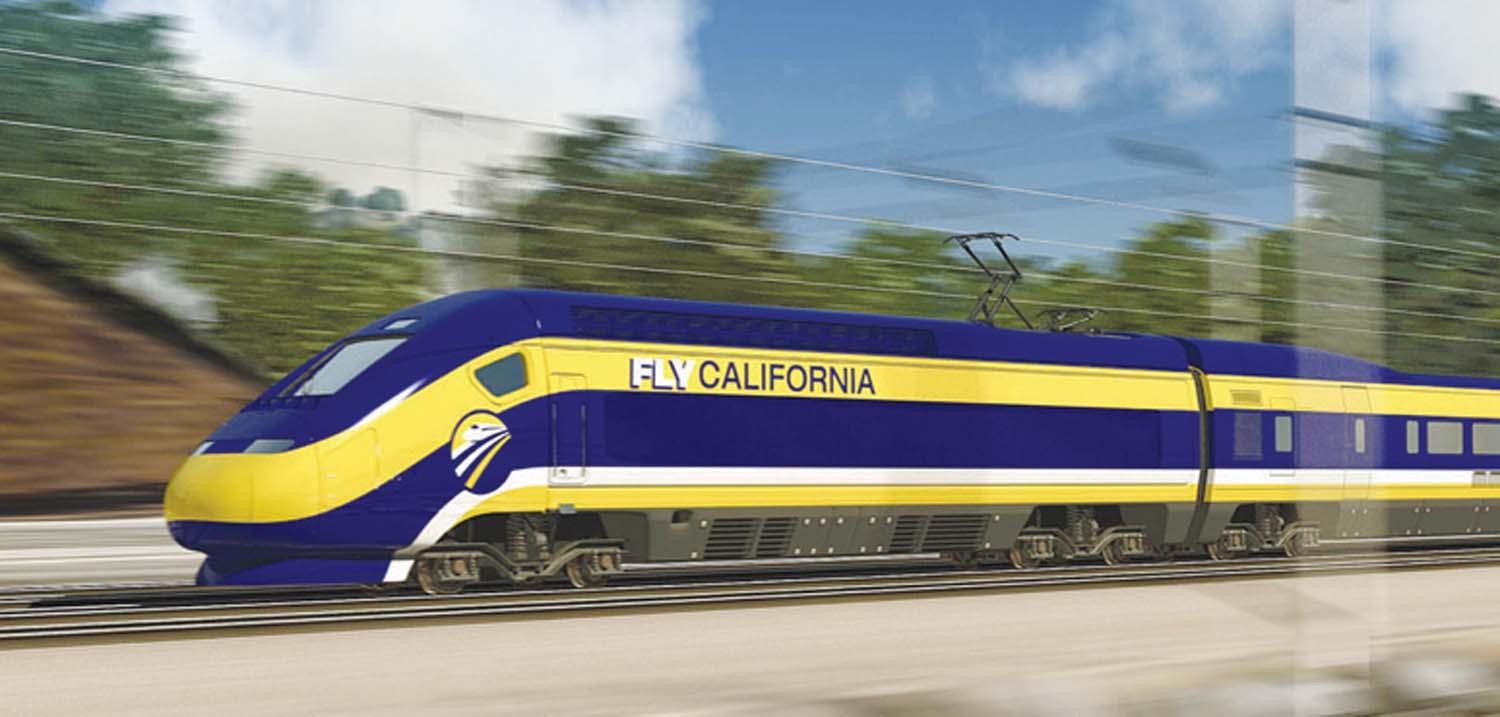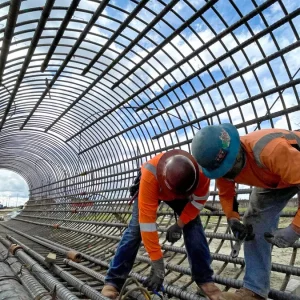Imagine this — you arrive in Los Angeles from San Francisco in a mere three-hour train ride to hang out on the beach with your friends. No painful six-hour drive or delayed flights, but rather, a trip that gets you to your destination as painless and quick as possible. The thought of having a train span the length of California traveling 220 miles per hour has the possibility of making travel up and down the beautiful Golden State much faster and more convenient.
Gov. Jerry Brown first proposed the California High-Speed Rail as early as the 1980s in his first term and has continued to be one of its strongest advocates nearly 30 years later in his final term. Through Proposition 1A in 2008, the California High-Speed Rail was supported by California voters and construction was expected to start shortly after. Although proposed in 2008, construction did not start until 2015, with a groundbreaking ceremony in Fresno. Right off the bat, a 7-year delay in commencing construction preempted the future delays construction was going to face over the next decade. 10 years have passed, but many parts of California have yet to see any tracks. As of right now, the train is not expected to finish completion until 2029, 21 years after the initial proposal was presented. A large reason for this drastic delay has been due to the entire project taking much more funding than initially expected. As construction has become more prevalent in some parts of California, the question remains whether or not the high-speed “bullet train” is really worth it. People have still managed to travel the lengths of California without the bullet train, and its staggering budget has led to doubt of the necessity of such a high-speed rail within the state.
Despite the long and arduous construction process, several productive long-term outcomes have emerged. One of the benefits of the bullet train is its seemingly impactful effect on the environment. The High-Speed Rail Authority (HRSA) argues that the train “encourages compact land development around transit stations, and helps California manage pressing issues with climate change, traffic and airport congestion and energy dependency.” An all-electric bullet train would leave a profound impact in relieving the increasing threat of pollution coming from slower trains, cars, and buses. At the same time, this depends on how many people choose to use the bullet train rather than any other mode of transportation. Finalizing the bullet train would not guarantee a substantive decrease in pollution coming from automobiles, and a bullet train would not eliminate the use of automobile or airplane travel within California. Nonetheless, the HSRA also states that “by 2030, high-speed rail is projected to cumulatively avoid 2.1 to 2.8 million metric tons of greenhouse gas emissions.” Alongside this guarantee, the HRSA also assures that the bullet train will produce zero emissions generated from the electric-powered operations.
Another factor that has warranted support from many Californians is the large increase in new jobs as well as the prospect of economic growth in disadvantaged communities. Based on a 2016 study from the HRSA, the labor income from construction is estimated to be between $1.38 and 1.68 billion. Although a modest number compared to the $68 billion spent on constructing the train, which still does not take into consideration all the future money that will be spent, the creation of new jobs and economic growth is appealing to many in support of the train construction. The Central Valley itself has gained almost 1,700 new jobs during the construction period, adding to an overall economic growth for the “depressed” Central Valley. The Central Valley, in particular, is one of the most “disadvantaged” parts of California — with such a heavy agricultural and rural economy, its GDP per capita is at distressingly low (Merced: $27,700) compared to the regional GDP of areas like Los Angeles ($62,826). The Community Benefits Agreement mandated that the project “promotes employment and business opportunities for small and disadvantaged businesses and workers during the construction of the high-speed rail project.” Many people believe that a bullet train station in cities throughout the Central Valley could engage communities, strengthen downtowns, and reinvigorate disadvantaged communities. There is a downside to this current upsurge in jobs — what happens when construction is over? What about all the jobs that are taken away from people whose work the train is cutting straight through?
Although the project board has focused mainly on the job increase, the number of families negatively affected by the construction of the train is not something to be overlooked. It was clear since the initial proposal of the project that the train was going to cut through some people’s properties, but perhaps not to the extent that it is happening now. As construction has taken longer than expected, landowners are beginning to question whether the destruction of their crops and homes was really worth it. Especially throughout the Central Valley, which is heavily dominated by landowners with vast farms, many individuals fear losing their land to this project and are very reluctant to give up their property for the price the state is offering them. It would be harder for families to maintain their production and crop yield if they continue to lose their land without adequate compensation. The state has been faced with a surge of lawsuits and a ready community standing up and fighting back to protect its own property.
However, perhaps the biggest concern affecting the completion of the bullet train is its expanding budget. Many Californians never thought the budget for the High-Rail System would reach such a high peak, and the budget is still expanding. The current estimated cost of the bullet train to finish the project in 2029 is at $68.4 billion, almost double what voters were told back in 2008. This immense budgetary increase not only puts pressure on state politicians to reform the budget but also introduces the big question — is the bullet train really worth $68.4 billion? The issue of increasing monetary spending has also outlined some underlying institutional issues in California. James Moore, the director of the transportation engineering program at USC, told the Los Angeles Times that the project, “is in my opinion overly deceptive. When it comes to large infrastructure investments, it is not unusual for public authorities trying to justify their effort to understate the costs and overstate the benefits.” There are a myriad of other regional issues California is facing and that $68.4 billion to could go elsewhere — public schools, Medicare, health care reform, and prison reform, just to name a few. As fewer people focus on the travel time gained from using the bullet train, more people are focusing on the increasing budget; how much more money is California actually going to have to spend?
Waiting in long traffic lines and dealing with “canceled flights” alerts can be incredibly frustrating. The bullet train was seen as a project not only to make quick travel feasible, but also as a way to reinvigorate the economy in parts of California, specifically the Central Valley. Although the project has been in the works for 10 years, the train is still not expected to finish until 2029. The immensity of the project makes the delay in construction inevitable, but the billions of extra dollars put into this project is not a good omen of what is to come. There is still an estimated 11 more years to finish the train, thus, a viable chance that the cost and time of construction will only continue to increase. This pet project of Jerry Brown has also been receiving some more opposition from frontrunner gubernatorial candidates Gavin Newsom and Antonio Villaraigosa, who both remain fairly lukewarm on the bullet train project. The lack of attention the newest state governor candidates have placed on the bullet train during their campaign alongside the low concern coming from Californian voters, makes the future of the project seem bleak. The bullet train presents a polarizing choice to Californians: do the positives offset the negatives or is the continuously increasing budget too large to be overlooked? The current escalation of jobs and the economic reinvigoration of disadvantaged economies are without a doubt adding to the economic vigor of California. But the budget cannot be ignored. California is battling with several other domestic issues that could greatly benefit from a $68.4 billion budget. If California wants to continue the bullet train project, then the state government either needs to be incredibly transparent about the projected budget costs, or learn to limit the amount spent. Maybe Californians will start to realize that the 3-hour bullet train ride to LA from SF will not be worth it after all.
Featured Image Source: LA Weekly





Be First to Comment